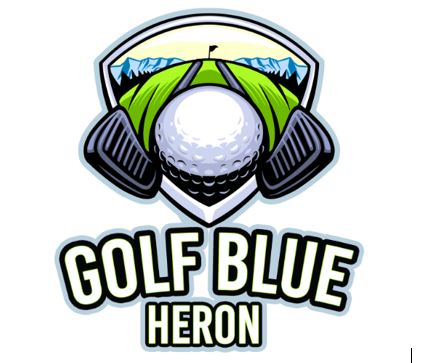Low Spin Vs High Spin Drivers – What’s Best For Your Game?
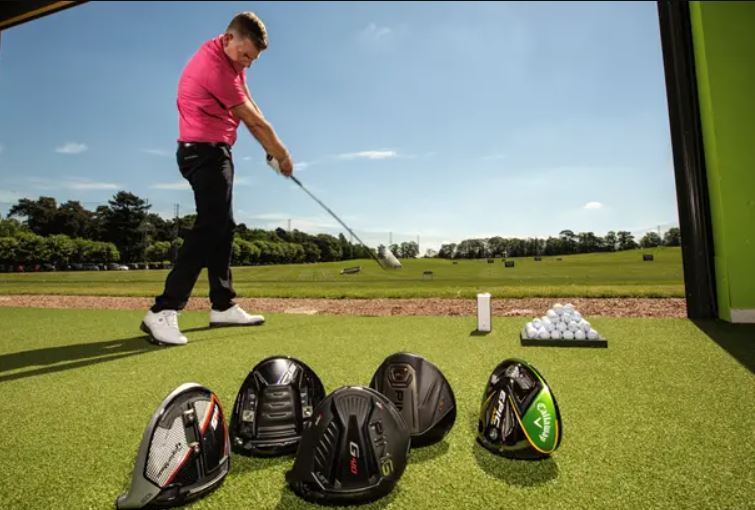
After reading an interview in Golfweek with Matt Rollins, a PGA Tour rep for PXG, I realized how misinformed our driver buying decisions are.
During the interview, he discussed the importance of spin relevant to loft and launch angle. That got me curious, and as a result, I decided to conduct a review of low spin vs high drivers,
In this post, I will share my findings and discuss the features and benefits of each option. By the end of this article, you will be able to confidently determine whether a low spin or high spin option is best for your game.
Intro To Spin Rates And Golf Drivers
According to Trackman Golf, spin rate refers to the quantity of spin that follows after impact. There are two types of spin that you generate, sidespin and backspin.
Sidespin determines the shape of your shot, while backspin impacts height and total distance.
The majority of modern drivers aim to reduce spin off the tee to promote straighter, longer shots. However, the degree of loft, and the flex of the shaft that you use, results in varying spin rates.
High Spin Vs Low Spin Drivers Overview
Drivers that deliver high levels of spin assist slower swinging golfers with getting the ball airborne off the tee. However, it also reduces the roll that you receive after your ball hits the turf.
If your driver features high spin, you can shape your shots more. Thanks to the additional sidespin.
Conversely, low spin drivers benefit faster swinging golfers who desire less backspin rpm to achieve a moderate launch and optimal roll. Furthermore, low spin drivers restrict sidespin, reducing your risk of hooking or slicing your shot.
What Exactly Are High Spin Drivers?
As the name suggests, high spin drivers generate extra sidespin and backspin compared to their counterparts.
The additional backspin helps you launch the ball higher to achieve optimal carry. But, it shortens your roll.
High spin drivers are ideal for shaping your shots off the tee, as they generate extra sidespin, enabling you to hit a draw or a fade.
What Are The Pros And Cons

Pros
Easy To Launch
It is no secret that reduced spin and optimal ball speed deliver maximum distance off the tee.
However, if you struggle to generate sufficient spin, you cannot launch your ball high and long.
That is why drivers with higher backspin rpm are easier for slower swinging golfers to launch.
Workability
Golf drivers that produce sidespin make it easier for you to shape your tee shots.
When drivers resist sidespin, it delivers straighter shots. That limits our ability to work the ball to our preferred landing spot on dogleg holes.
Carry Distance
When you launch your golf ball along a satisfactory apex, the aerodynamics of your ball will help you enjoy maximum carry.
It is specifically handy on well-manicured courses with limited roll where you need all the carry you can get.
Cons
Reduced Roll
The downside to generating excess backspin off the tee is that it impacts the roll of your ball.
The backward momentum causes your ball to sit quickly on the fairway, costing you precious yards.
Ballooned Tee Shots
While high spin drivers benefit slow-swinging golfers, they can cause the faster swingers to balloon their tee shots.
The natural high launch, coupled with backspin, leads to you skying your drive and losing considerable distance.
What Exactly Are Low Spin Drivers?

Contrary to high spin drivers, their low spin counterparts produce a lower straighter launch that helps you to maximize your roll yardage.
The powerful hitters among us enjoy this forward momentum which helps them gain an additional twenty to thirty yards after landing.
Low spin drivers also combat side spin to limit hooks and slices to improve your shot dispersion off the tee.
What Are The Pros And Cons
Pros
Lower Launch
The lower launch of a low spin driver is ideal for players who hit do not need any assistance to get their ball airborne off the tee.
The lower trajectory helps the ball to run when it hits the landing zone.
Increased Roll
As a result of the lower trajectory delivered by low spin drivers, your ball enjoys extra roll, which can add several yards to your total distance.
Straighter Shots
Drivers with reduced spin limit the sidespin that you generate at impact.
While it makes it difficult to shape your shots. It helps you to hit straighter drives, which improves your FIR percentage.
Cons
Reduced Workability
As I mentioned before, low spin drivers limit the level of sidespin that you generate at impact.
That promotes a straighter ball flight and makes it challenging to induce a draw or fade.
Launch
If you are a player who struggles to generate sufficient spin to get your ball airborne, you will endure long, frustrating days out on the course.
The low spin setup will make it difficult for you to consistently launch your tee shots, leading to a loss of distance. And a high-scoring round.
Best High Spin Driver – Cobra Radspeed XD
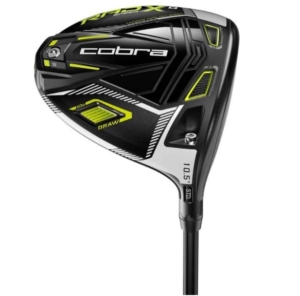
Cobra’s Radspeed XD tops our list as the best high spin driver on the market. Compared to the standard Radspeed, it offers a weaker 12-degree head option to deliver increased backspin. It is also set up for a draw bias to counteract slices.
To optimize your distance off the tee, Cobra’s engineers employed Radial Weighting, which precisely positions the CG for your preferred launch. On the topic of weights, the heel packs 10-grams of tungsten to deliver a closed face at impact for straighter shots.
The Radspeed XD features more than weights. The Milled Infinity Face expands the zone that promotes explosive ball speed to help you achieve a powerful launch.
Finally, a T-Bar chassis enables extra weight to be positioned forward. That enhances stability at impact, lowers spin, and increases ball speed. For the highest spin rates, I suggest testing the head with 12-degrees of loft.
In summary, the Cobra Radspeed XD driver is ideal for players who slice their drives and need to compensate for longer, straighter shots.
Pros and Cons
Pros
- Combats slices
- Delivers explosive ball speed across an expanded area
- Forgiving
- Promotes straighter shots
- 12-degree driver head produces increased spin
Cons
- It is not suited to players who hook the ball
- Expensive
- The increased spin generated does not suit golfers with faster swing speeds.
Overall Score: 94/100
Check Out More Reviews:
Best Mid Spin Driver – Callaway Epic Max
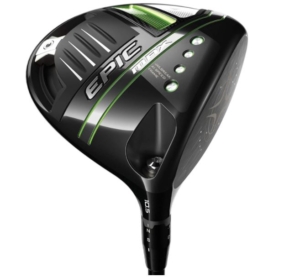
Callaway’s Epic Max 10.5-degree won us over in the best mid-spin driver category. The 10.5-degree lofted driver delivers a moderate degree of spin to help you get the ball airborne without it ballooning.
Callaway applied A. I to the design process of the driver and created a new Jailbreak Speed Frame, which enhances the stability of the clubhead at impact.
Plus, they fitted their signature Flash Face to expand the zone that produces rapid ball speed, and spin robustness.
When these factors combine, you enjoy maximum ball speed, which leads to longer yardage off the tee.
The engineering team wasn’t done yet. The consensus was that you should have the freedom to choose your desired shot shape. So, the team added a 17-gram sliding weight.
That enables you to adjust your shot shape by up to 20-yards in either direction.
Finally, the Callaway Epic Max is a forgiving driver, thanks to the deep CG, high MOI, and draw bias. The combination keeps you straighter and longer consistently,
In conclusion, the Callaway Epic Max suits mid to high handicappers, looking for moderate spin and straighter, longer shots.
Pros and Cons
Pros
- Stable frame
- Produces rapid ball speed across the clubface.
- Adjustable weights for your preferred shot shape
- Provides optimal forgiveness
- Promotes straighter shots
Cons
- Premium-priced product
- The natural high launch of the Epic Max does not suit players who naturally achieve a higher degree apex.
Overall Score: 96/100
Check Out More Reviews:
Best Low Spin Driver – TaylorMade M5
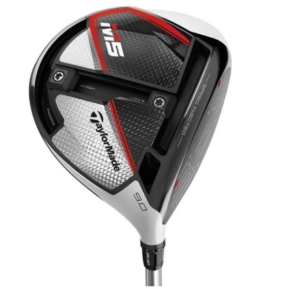
As the lowest spinning driver in the TaylorMade M range, it is the M5 that wins hands down in this category. TaylorMade did not hold back with this driver. They injected tuning resin to help the clubface generate the maximum legal ball speed limit.
Next, they inserted a Twist Face. The face curvature reduces side spin at impact to combat slices and hooks. As a result, you enjoy more time in play than looking for your ball in the woods.
Although the above features are necessary for hitting straight and long, the star of this show is the Inverse T-Track. TaylorMade’s engineers added two 10-gram weights that enable you to adjust the level of forgiveness, launch angle, and shot shape.
The TaylorMade M5 is straight, long, and allows you to set it up for your preferred shot. I recommend slower swinging golfers to steer clever of this club due to the low spin. It is best suited to faster swinging golfers who have no challenge launching the ball.
Pros and Cons
Pros
- Generates exceptional ball speed
- Reduces sidespin
- Promotes straighter shots
- Adjustable weights enable you to set up for your preferred launch, shot shape
- Forgiving
Cons
- Moderately expensive
- Oversized clubhead may not appeal to superior golfers and traditionalists.
Overall Score: 93/100
Check Out More Reviews:
Conclusion on Low Spin Vs High Spin Drivers

There you have it. Our review on low spin vs high spin drivers is complete. While both clubs have their perks, I believe the high spin drivers offer more to the average golfer who doesn’t strike their shots like Bryson DeChambeau.
High spin drivers are easier to launch, offer increased workability and optimal carry distance. These are qualities that every golfer can benefit from.
However, their susceptibility to hooking and slicing shots, coupled with the risk of ballooning shots, makes them best suited to slower swinging golfers looking to shape their shots.
If you are struggling to launch your drives. Or you are tired of hitting straight drives, the Cobra Radspeed XD is worth looking into.
